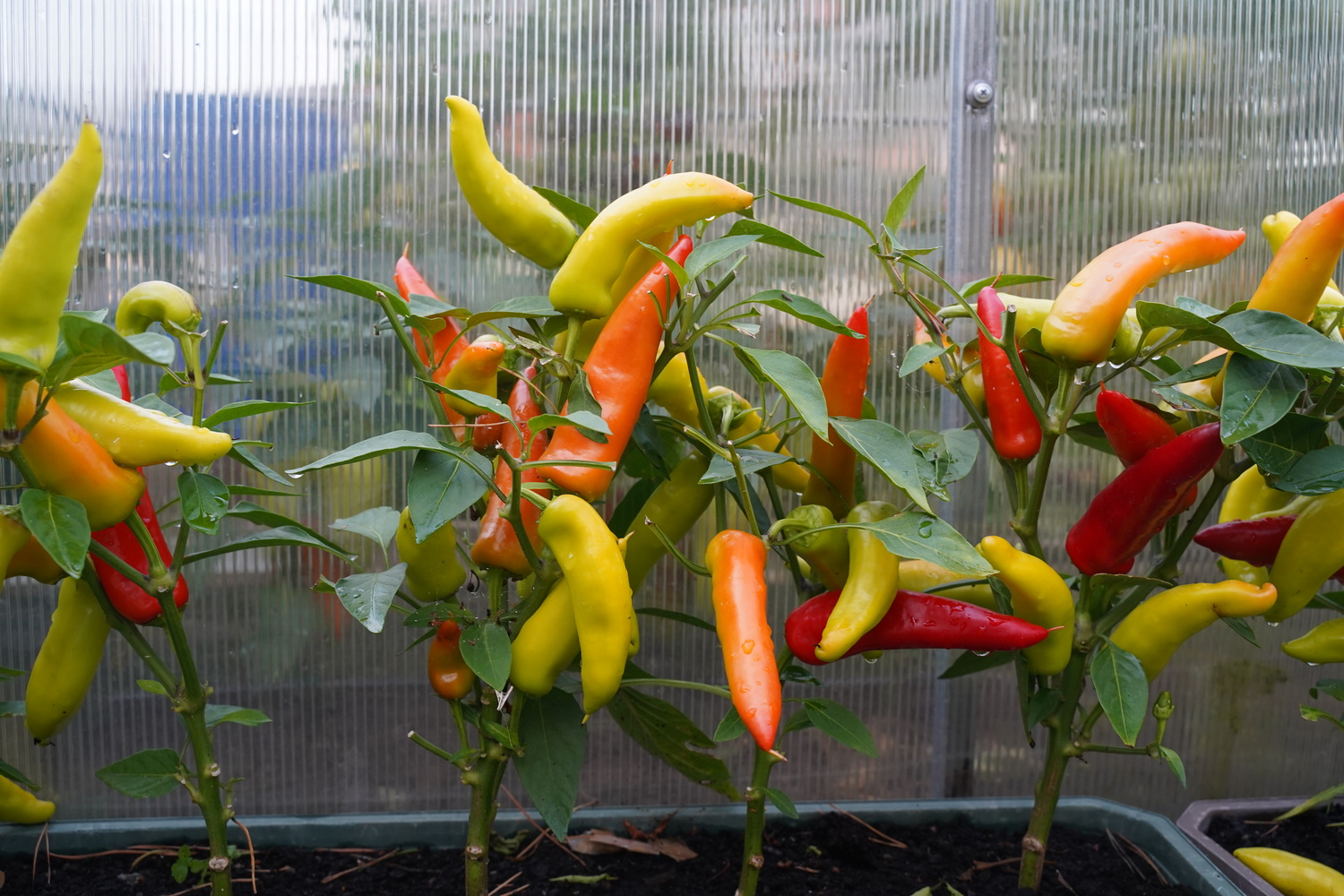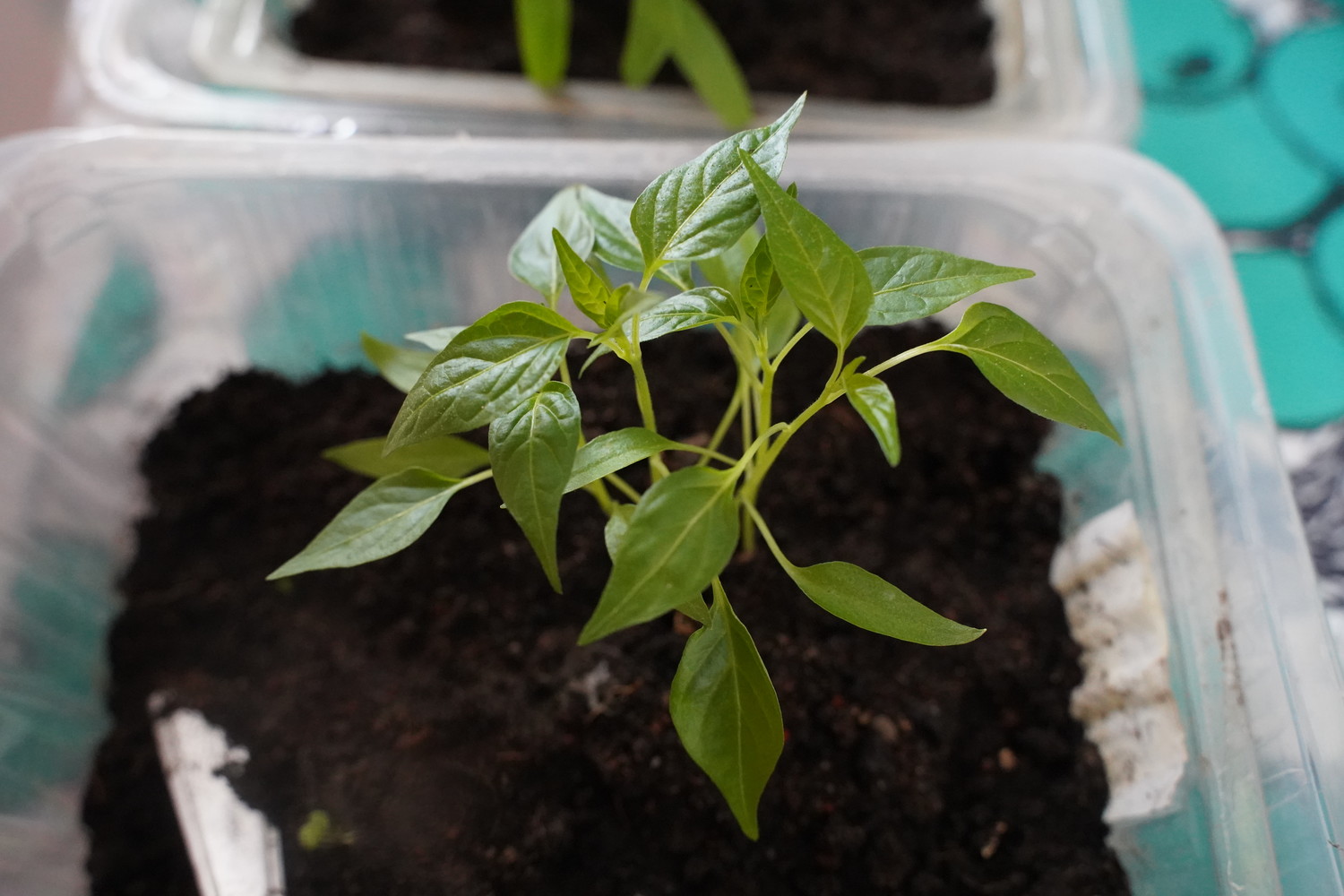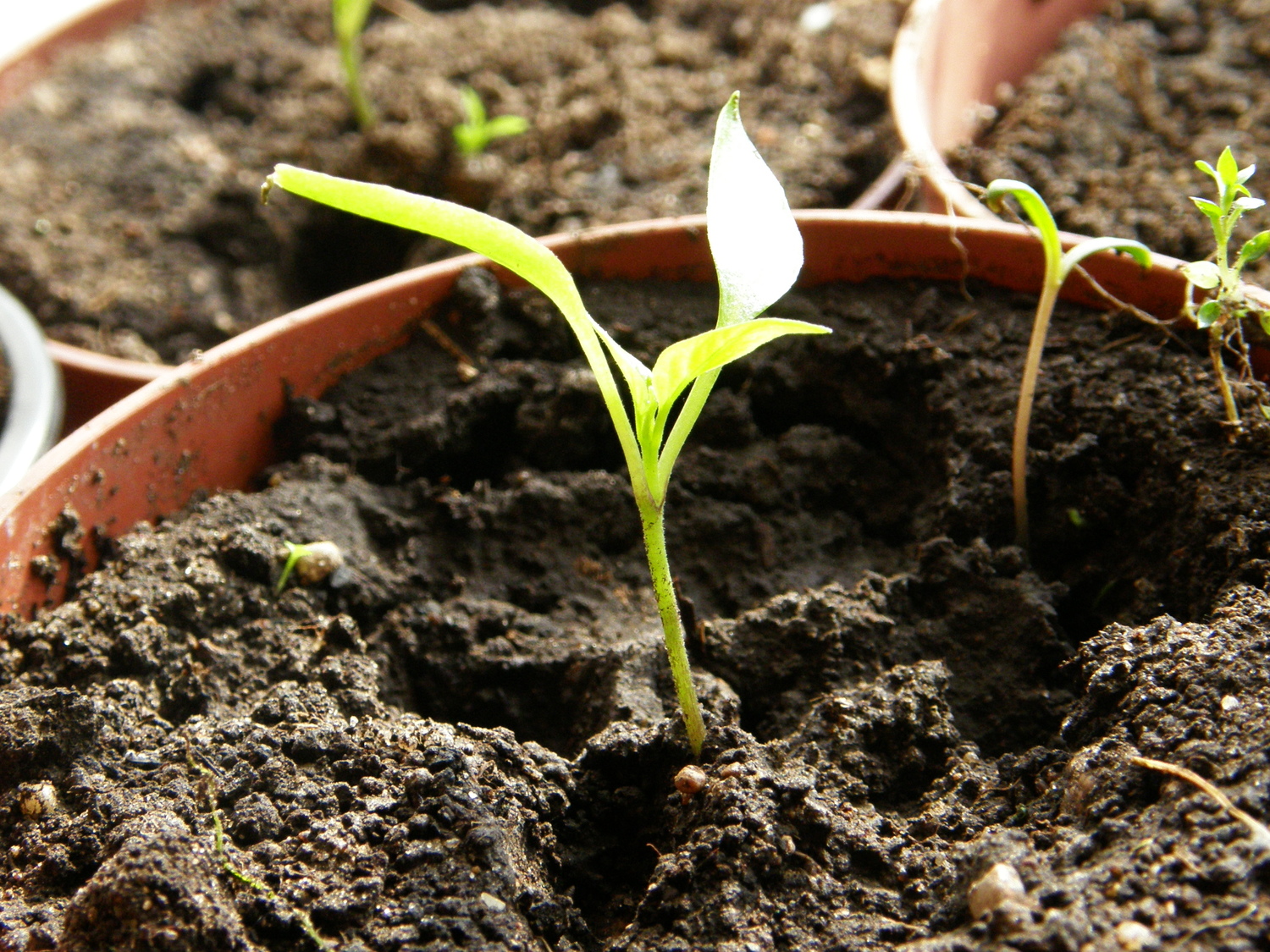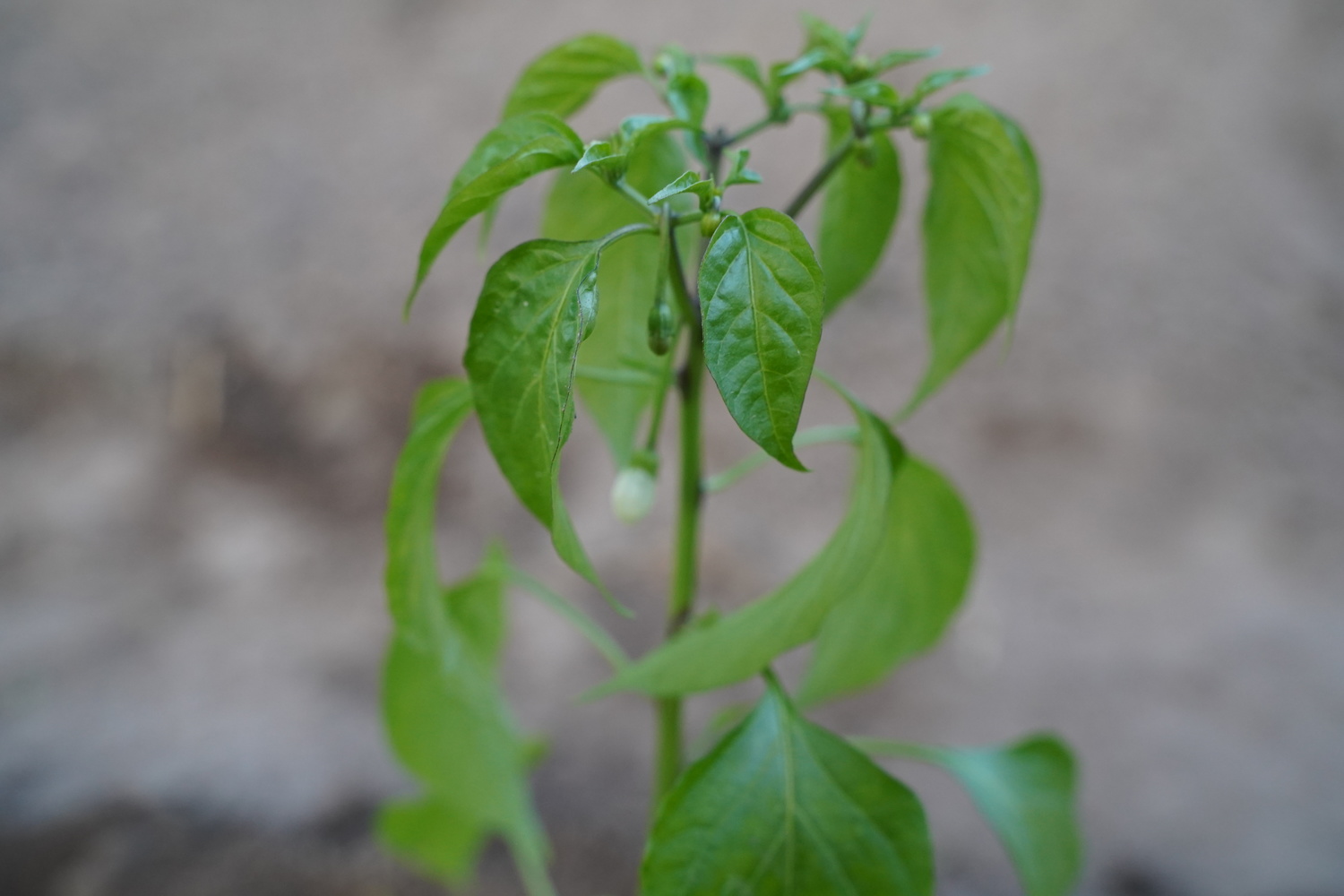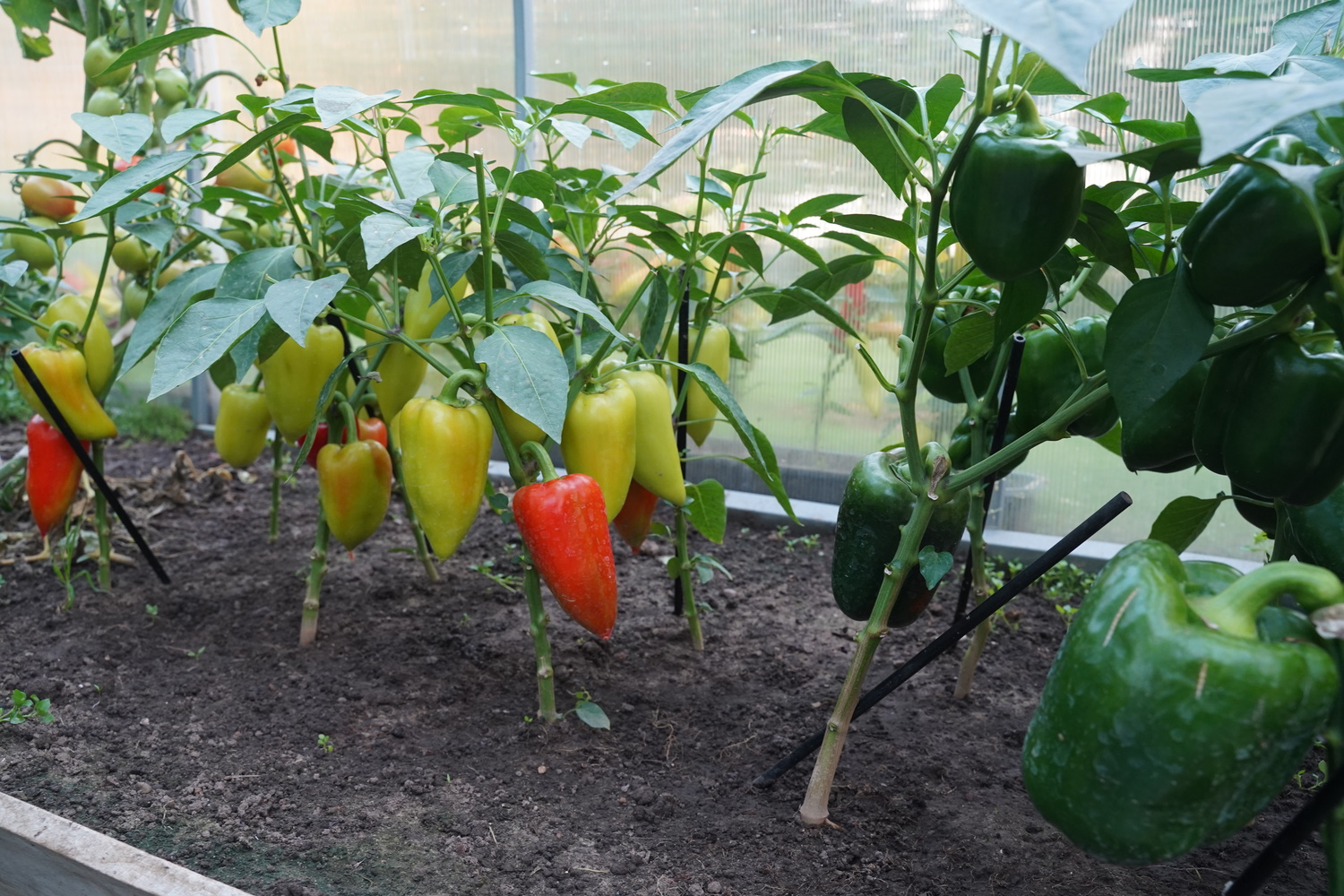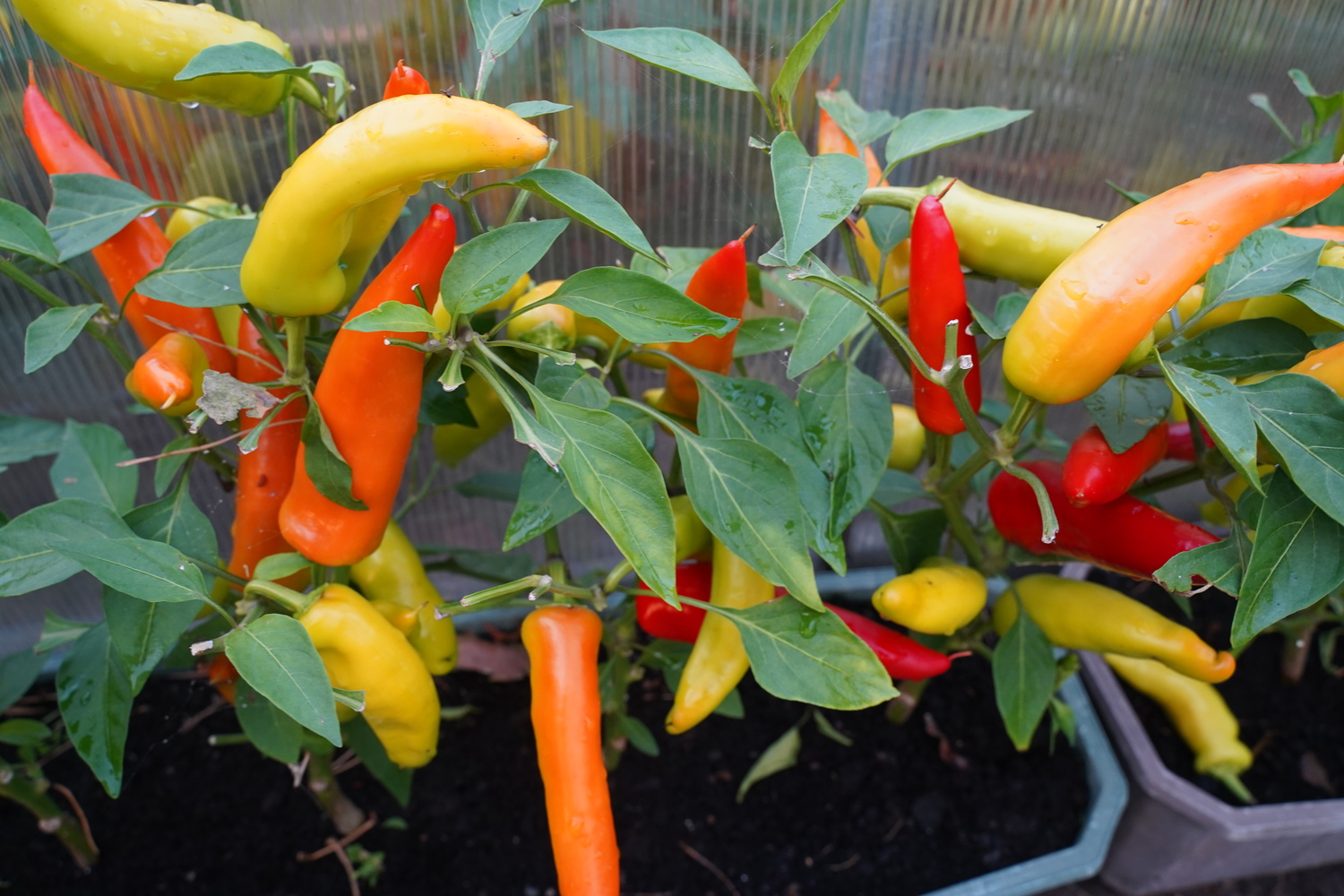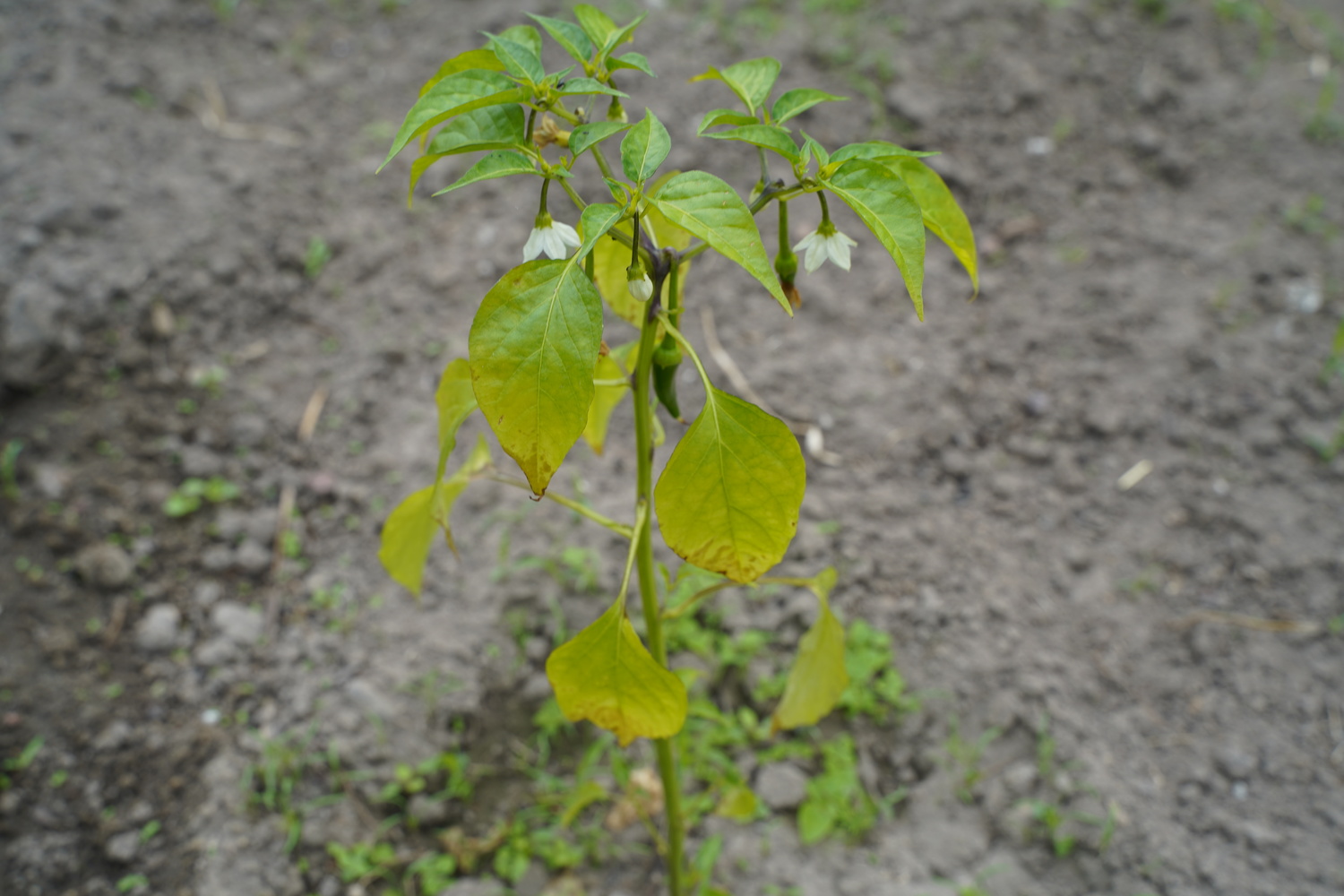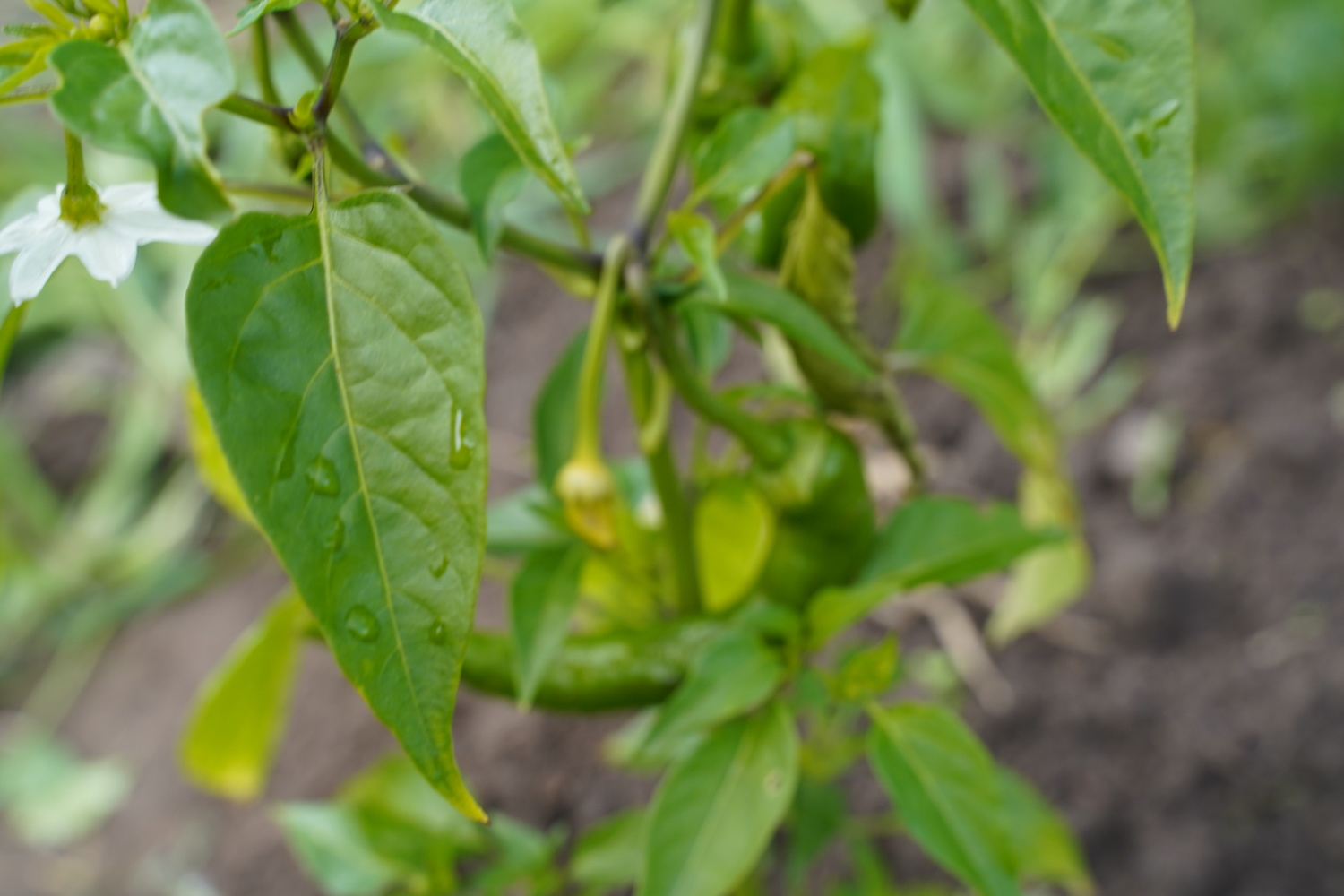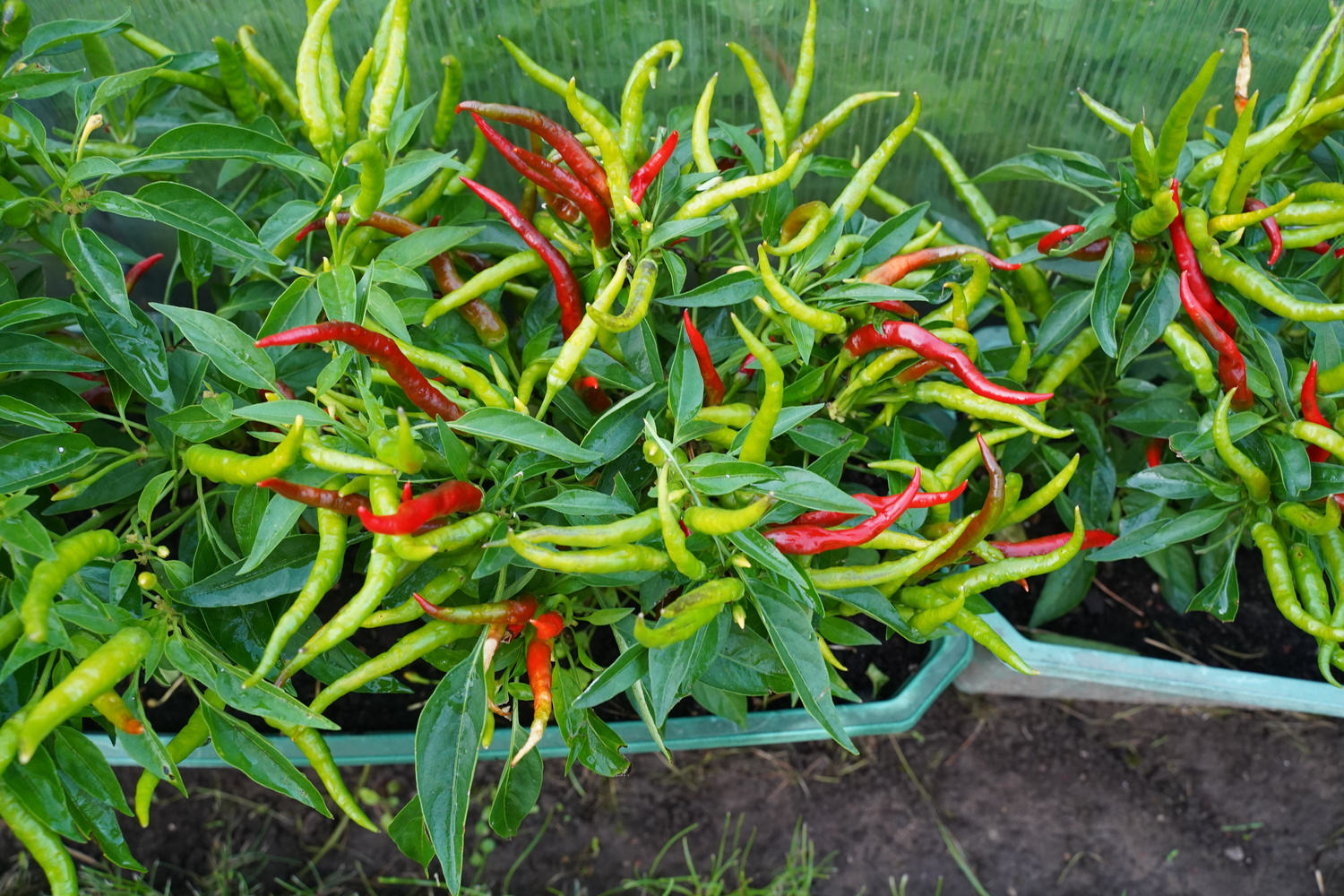The first pepper growers were the indigenous people of Latin America. The Balkans are considered the second homeland of peppers, as they are grown there in large quantities due to the warm climate, which suits their southern nature. Unlike in the Balkans, in our region, it is safer to grow peppers in greenhouses rather than in the open field.
When to Sow Peppers
Growing peppers begins with seedlings, thus, the best time for sowing and germination is from mid-February to mid-March if you plan to plant them in an unheated greenhouse.
Pepper seedlings can be transplanted into the greenhouse from mid-April (for heated greenhouses) to late May or early June (for unheated ones), depending on the seedlings' variety and maturity.
Soil for Pepper Seedlings
Most pepper growers use a reliable commercial substrate with a scientifically optimised acidity and nutrient balance. However, if you decide to grow pepper seedlings in soil from your garden, make sure it meets the following requirements:
- Soil acidity: 6.0-6.8 pH.
- Preferred soil type: light, loose, sandy loam, fertile and rich in humus, well-draining, light clay, or peat soil.
- Follow crop rotation rules—ensure that peppers have not been grown in the soil intended for seedlings for the past 3-4 years and that the previous crops were not tomatoes, potatoes, or peppers. A more extensive list of suitable predecessor crops can be found in the table:
| Suitable Preceding Crops | Neutral Preceding Crops | Unsuitable Preceding Crops | |
| Peppers | Cucumbers, Marrows, Legumes, Cauliflowers, Early Cabbages, Cereal Crops (especially Winter Wheat) | Carrots, Beets, Cabbages, Lettuce, Garlic, Onions, Radishes, Parsley, Herbs, Turnips, and Pumpkins. | Tomatoes, Potatoes, Peppers, Aubergines, Red Clover, Beans. |
You can make a homemade mixture with the following proportions:
| Compos | Humus | Peat | Sand |
| 50% | 20% | 20% | 10% |
Pepper Germination
The germination process for peppers lasts a total of 2 to 2.5 months (depending on the variety). As mentioned earlier, the seeds should be sown for seedlings by mid-March. Before sowing the seeds into seedling containers, it is worth selecting and preparing them.
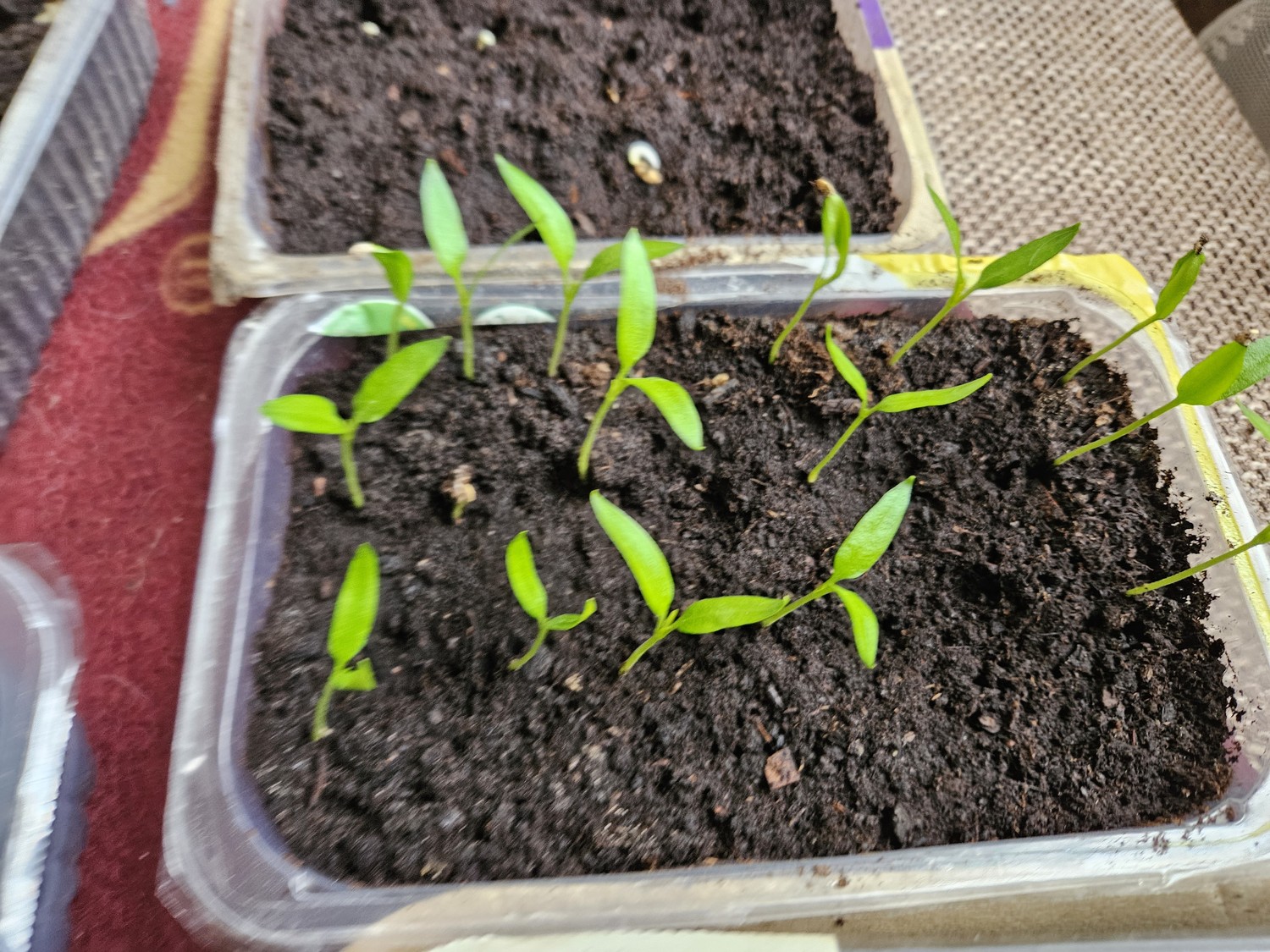
The age of pepper seeds should not exceed 3-5 years, as seed viability significantly decreases with age. Seeds that are 5 years old still maintain 65% of their productivity.
For seed coating and disinfection, it is advisable to soak the seeds in a warm potassium permanganate solution (10 g per 1 liter of water) for 20 minutes. Branded seeds do not require coating.
It is crucial to decide in advance on the suitable container for seedlings. Since pepper seedlings categorically do not tolerate transplanting, pricking, or separating roots from their "native" substrate, it is recommended to sow pepper seeds in wider seedling containers made from organic materials (peat, cardboard containers, and cups). Later, these organic containers can be directly inserted into the greenhouse soil, avoiding the painful process of root separation.
Pepper seeds are sown into the seedling soil at a depth of 1-1.5 cm.
The step for planting pepper seeds is 1.5-2 cm in the row. The distance between the rows should be 3-4 cm.
Water should be applied in moderation, otherwise, the seeds may wash out of the soil. It is advisable to cover the seed trays or containers with plastic film to prevent moisture evaporation. It is essential to maintain a consistent room temperature of +22-25ºC.
The first seedlings will appear after 12-15 days. At that point, the plastic film can be removed.
Pepper seedlings are first fertilised when they develop 2 true leaves. After that, fertilisation can be done at 10-12 day intervals.
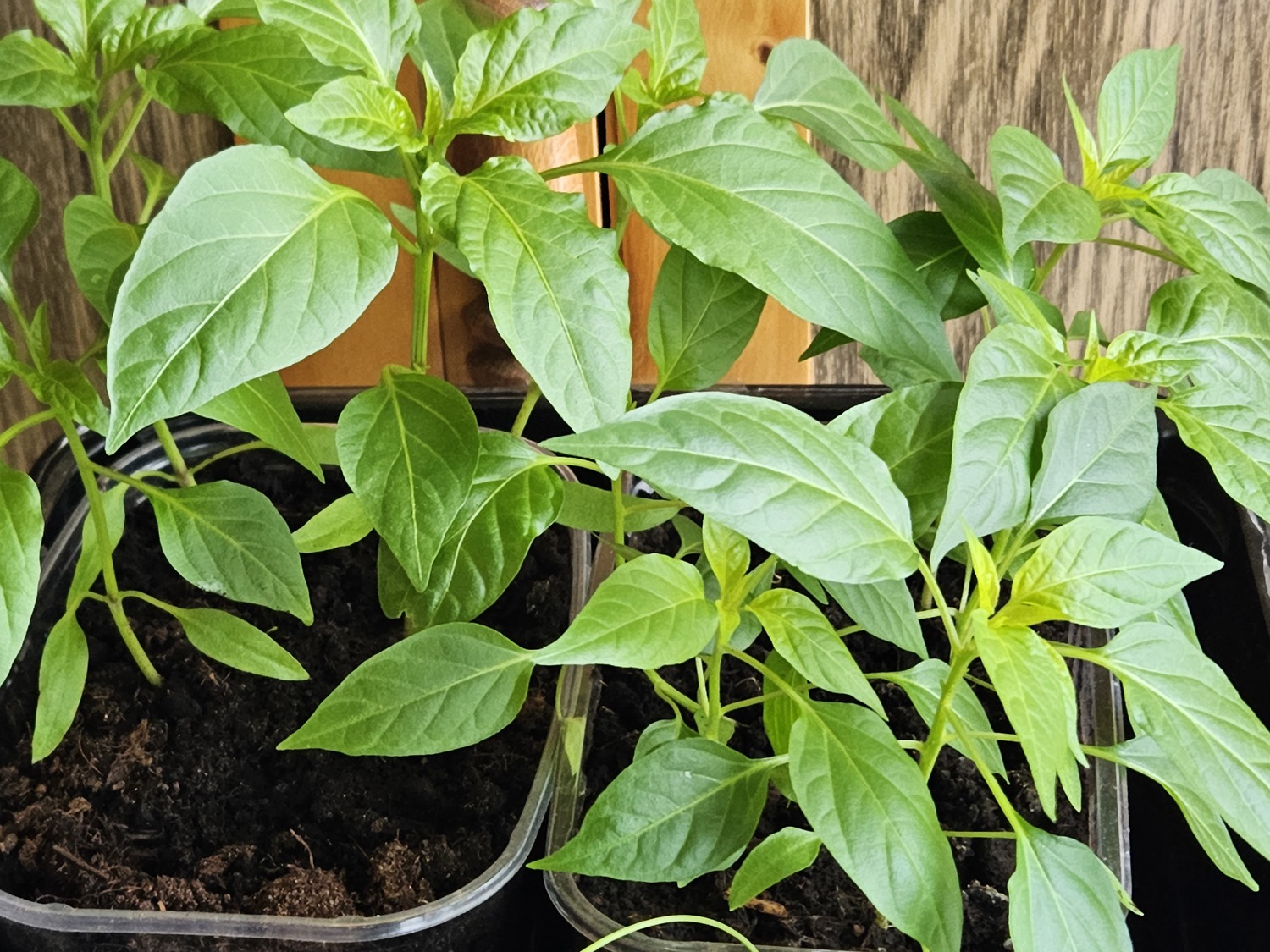
Healthy Pepper Seedlings
After 60-80 days from planting the seeds, the pepper seedlings can be transplanted into the greenhouse. The signs of healthy seedlings, ready to move to their new home, include:
- 15-18 true leaves
- Stem height of 30-35 cm
- At least 2-3 fully opened flowers.
Pepper Planting in the Greenhouse
- Before planting the seedlings, the greenhouse soil needs to be prepared and fertilised, depending on its type.
- For loam: well-rotted manure – 10 kg/m², compost – 10 kg/m², peat – 20 kg/m². For heavy clay: sand – 10 kg/m², sawdust – 10 kg/m², superphosphate – 20 g/m².
The soil for peppers should not be fertilised with fresh manure—only with well-rotted manure.
For planting peppers in a greenhouse, avoid soil where undesirable preceding crops (such as peppers, chili peppers, tomatoes, and potatoes) were grown last year. A full list was mentioned in the table above in the "Soil for Pepper Seedlings" section.
The neighbors of peppers are also important – what grows in the adjacent beds:
| Compatible Neighbors | Incompatible Neighbors | |
| Peppers | Basil, Spinach, Parsley | Cucumbers, Tomatoes, Peas, Fennels |
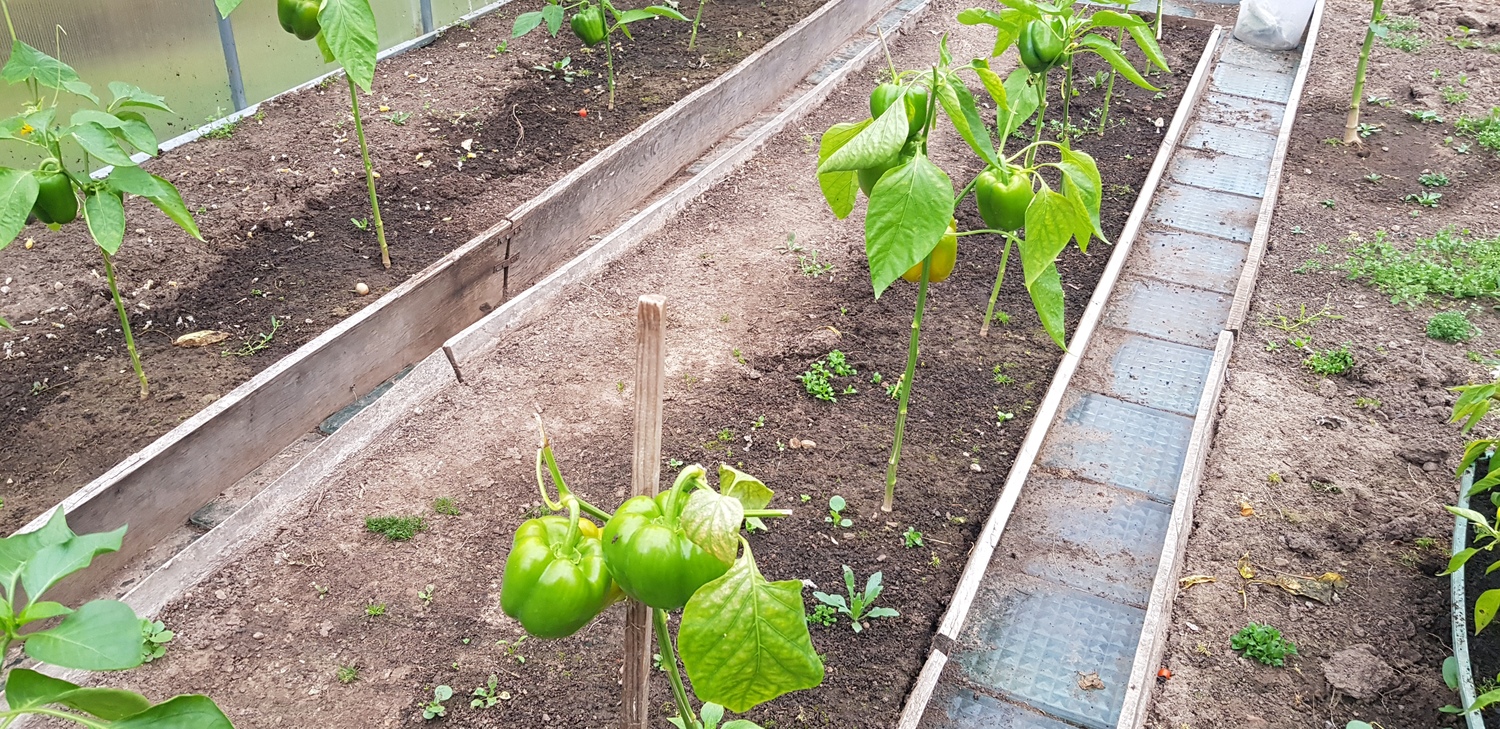
If everything is good, the soil is prepared, and the air temperature reaches at least 15-18ºC, plant the organic seedling pots with pepper seedlings into the greenhouse soil without removing the roots. For each seedling pot, dig holes at the distances indicated below and moisten the bottoms of the holes.
- Pepper seedling planting step: 30-50 cm;
- Planting depth for peppers: up to the first leaf level;
- Row spacing: 50-60 cm.
After placing the seedling into the hole, cover each planted seedling with soil around the stem up to the first leaves.
It is not necessary to water the planted pepper seedlings immediately if the hole was already watered before planting. However, if you planted into a dry hole, it is worth watering the seedlings with 2 liters of water.
In the greenhouse, it is important to maintain a constant daytime temperature of 22-23º C and a nighttime temperature of 17-18º C until the bud stage.
Cultivation and Care of Peppers in a Greenhouse
Fertilisation of Peppers
1-2 weeks after planting, the pepper roots will have adapted sufficiently to the greenhouse soil, the leaf color will become darker and more vibrant, and new buds will appear on the stems. All these signs indicate that the plant can now be fertilised.
A 200 g/m² dose of tree ash will help peppers grow smoothly and protect them from aphids and other pests.
At the same time, fertilise with liquid phosphorus, potassium, and nitrogen.
- Superphosphate - 40 g/10 l of water,
- Potassium sulfate - 20-30 g/10 l of water,
- Ammonium nitrate - 20 g/10 l of water.
The next fertilisation should be done when the pepper starts to develop the first small fruits. The final - 2-3 weeks later.
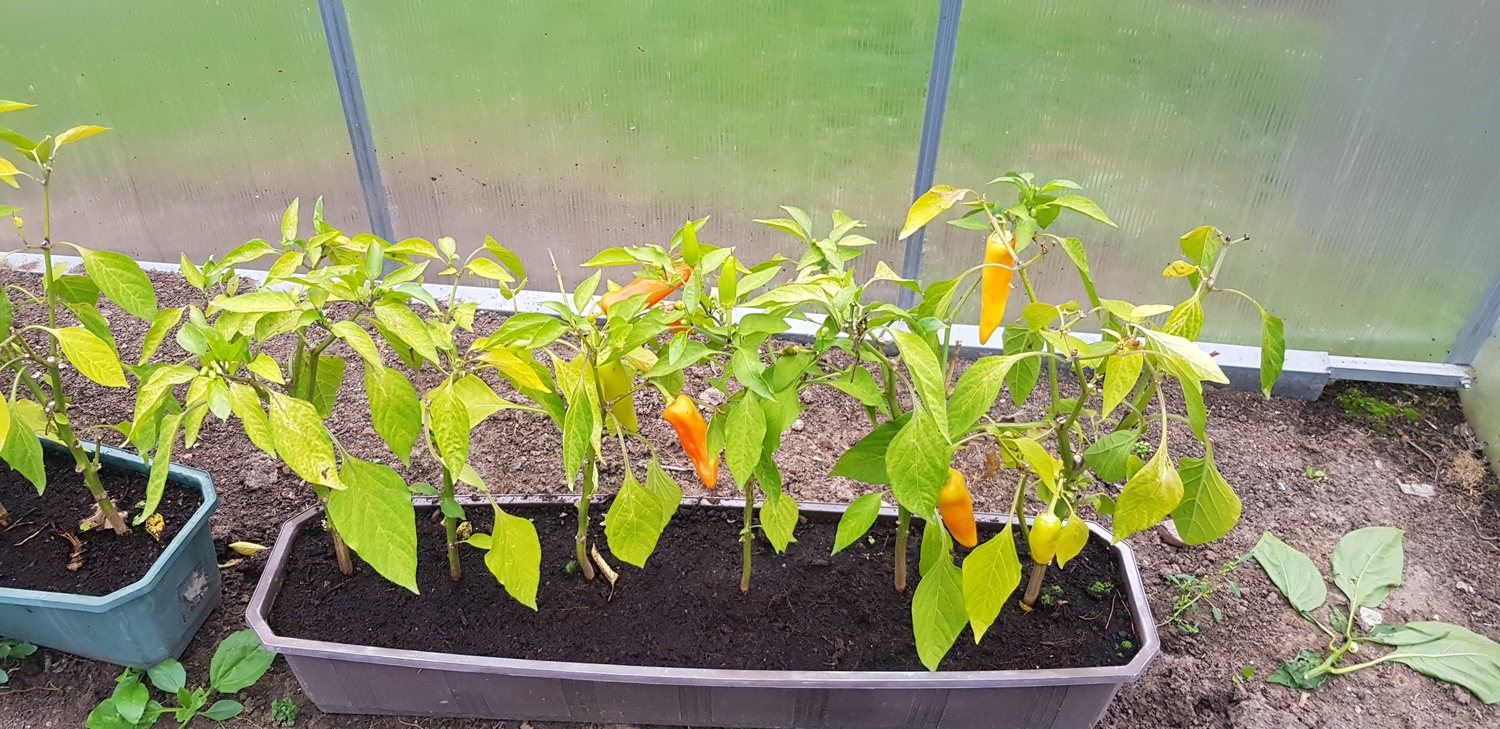
If the soil where the peppers are growing has been fertilised with too high a concentration of fertilisers or if the fertilisers were prepared with incorrect proportions, the peppers will experience "chemical poisoning" and significant stress, which will result in fruit drop.
How to Water Peppers?
The first watering is done 4-5 days after planting. Norm – 10 L/m².
The frequency of subsequent watering procedures is 2-3 times per week. The watering norm during the pepper vegetation period is 20-30 L/m².
Peppers should continue to be watered at 8-10 day intervals until the beginning of fruiting. Always water around the stem, not on the leaves.
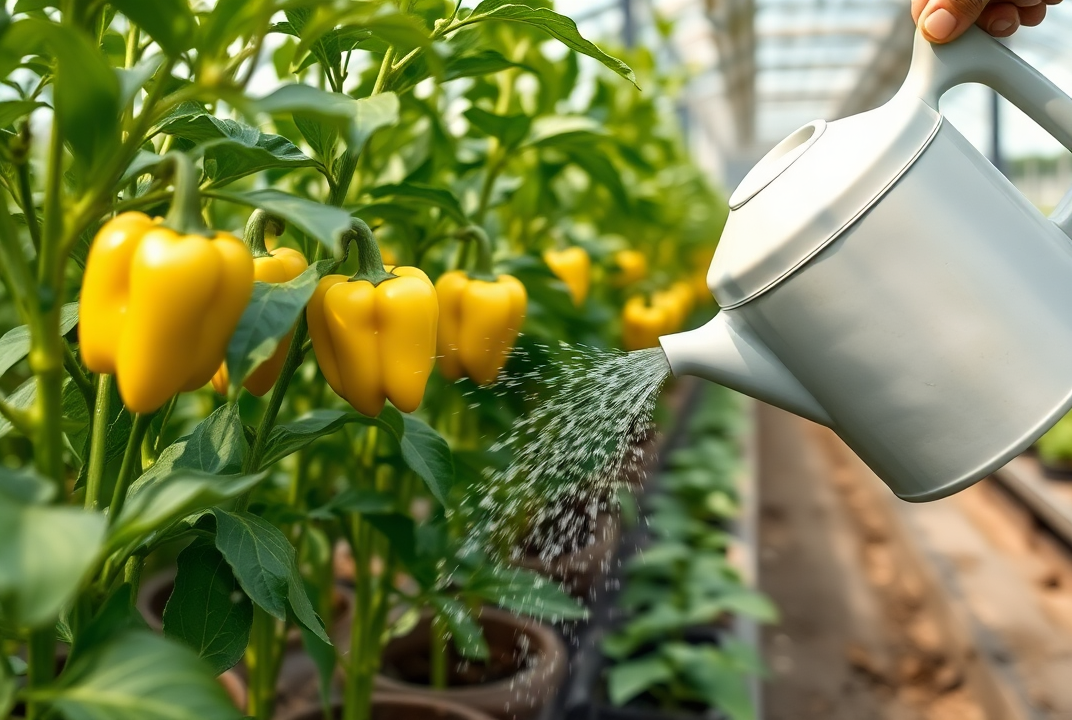
Pepper fruiting period: 3-4 waterings per week, 25-35 L/m².
If watered too little, pepper buds will drop massively, preventing fruit development. If watered irregularly, pepper pods won’t receive the necessary amount of water and will fall off.
Stringing Peppers
When peppers grow to a height of 50–60 cm, their stems are tied vertically to stretched wires, strings, or twines to keep them from lying on the ground.
Pepper Pruning
About a month before fruiting begins, it's worth pruning the pepper plant. Most of the pruning is done on the main stem—cutting it back to the top flowering part—while leaving 2–3 strong shoots at the top. On these shoots, smaller side shoots growing above the second leaf should also be trimmed.
Common Pepper Issues and Solutions
Why do pepper pods fall off in the heat? Problem-solving
Sometimes, peppers growing in a greenhouse during the summer fall off the plants. The pods are already large but still green. They break off from the stems and fall to the ground. What could be the reasons for this, and how can it be stopped?
Careless transplantation into greenhouse soil can also be a cause. Peppers have a very fragile root system. During transplantation, the roots may have been damaged, and peppers later react to this stress by dropping their fruits. That's why experienced growers always transplant pepper seedlings along with the peat container. This helps to avoid root damage.
transplant pepper seedlings along with the peat container. This helps to avoid root damage.
It may be that by mistake you are growing not hobby pepper varieties but industrial ones. There are varieties designed for large farms and mechanized industrial harvesting. The stems of such varieties detach very easily, even with a slight shake or touch of the bush. As a result, the fruits fall off.
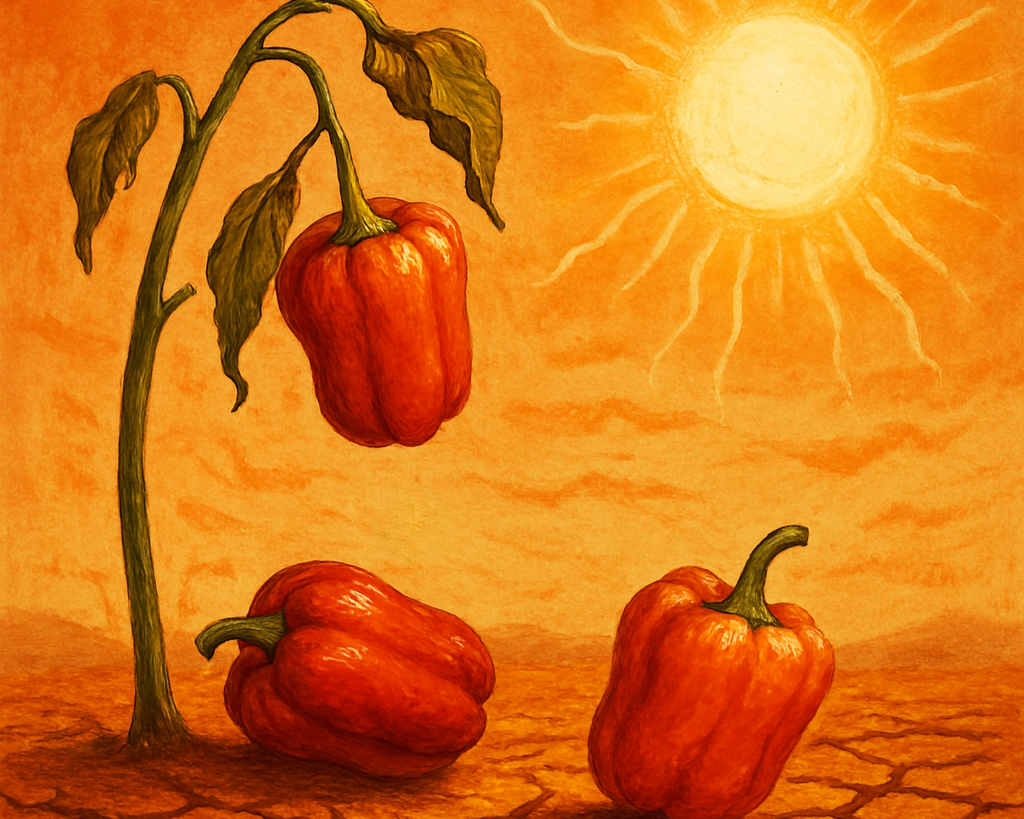
The heat is to blame. One of the serious reasons is heat, scorching temperatures, and drought. In other words, a violation of the temperature regime. Spoiled pepper pods can't withstand this; they break off and fall.
When the air temperature reaches around +30-35º C, when the air humidity drops suddenly, and when the moisture content in the soil also decreases, a moisture imbalance occurs. Moisture evaporates from the leaves, but peppers cannot absorb enough new moisture from the soil and air. In the heat, the lack of moisture affects normal growth.
Then, the water and nutrients begin to flow in the opposite direction — from the fruits (the peppers) to the growing points (roots) and leaves. In the pedicels, i.e. the areas where the fruits are attached to the plant, a separating layer of cells forms. As a result, the flow of moisture and nutrients to the fruits is interrupted. This is why the pepper pods and buds break off from the pedicel and fall off.
This happens if sweet pepper seedlings are planted next to chilli varieties. Sweet peppers are not only susceptible to self-pollination (autogamy) but also to cross-pollination. If bitter hot peppers are grown nearby, the bees may carry their dust to the sweet pepper stamens. It is better not to plant them very close together.
In addition, in the heat and drought, the stamens and pistils dry out significantly. As a result, pollination and fertilisation do not occur. Without fertilisation, there will be no fruits, i.e., no pods.
Excessive use of pesticides. Some gardeners recklessly use chemical insecticides to protect their crops from pest insects. However, this harms the plants. For example, aphids are very fond of attacking peppers. The farmer sprayed the pepper bushes heavily with the pesticide. But the peppers got poisoned, and their pods fell off.
Can fallen pepper pods be consumed?
- If you suspect that the pods have fallen due to chemical poisoning, do not consume them. Peppers can accumulate harmful chemicals that were sprayed on them.
- If no chemicals were used and you believe the pods fell due to heat, transplanting, root damage, or accidental shaking, such pods can still ripen on the windowsill.
Why are Sweet Peppers Bitter Sometimes?
This happens if sweet pepper seedlings are planted next to chilli varieties. Sweet peppers are not only susceptible to self-pollination (autogamy) but also to cross-pollination. If bitter hot peppers are grown nearby, the bees may carry their dust to the sweet pepper stamens. It is better not to plant them very close together.
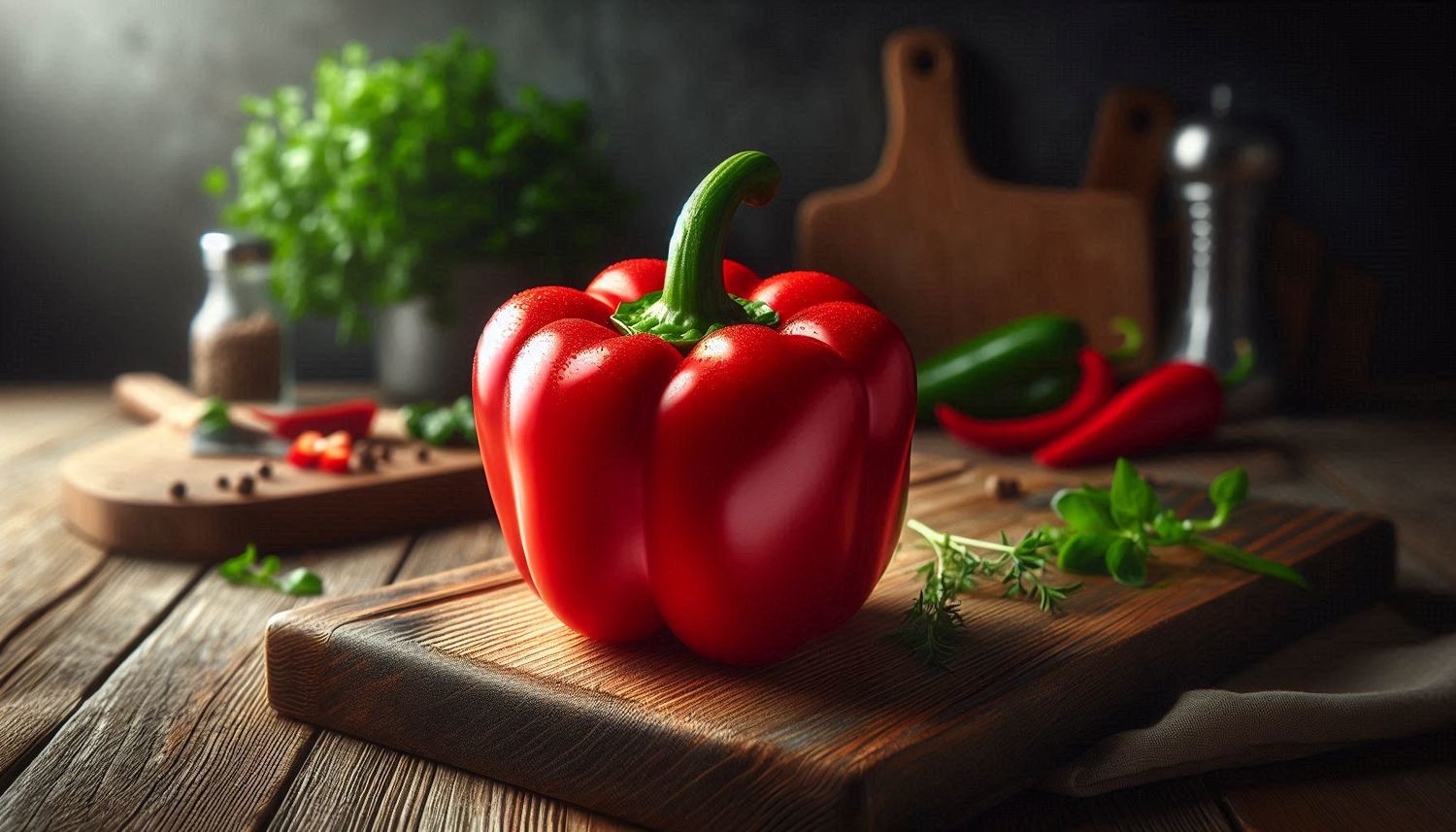
Pepper Diseases and Pests
| Disease | Symptoms | Causes | Consequences |
| (Botrytis) Gray Mold | Grey and whitish mycelial deposits on the lower leaves and undersides of stems. | Cold, wet weather. Excess moisture from irrigation. Excess nitrogen fertiliser. Persistent moisture on lower leaves | Rotten and spoilt fruit |
| White-rot | White spots on leaves and stems of seedlings. Black fungi in the flesh of stems | Non-compliance with crop rotation. Contaminated soil. Excess moisture in the greenhouse | Stem damage and decay. Fruit drop. Death of the plant |
| Alternariosis | Brown spots on leaves. Leaf drying. Black spots on fruit and fruitlets. |
Non-compliance with crop rotation. Contaminated soil. Excessive moisture. Hot weather and excessive temperatures in the greenhouse |
Seedling drying and death. Withering and death of the entire pepper bush. Loss of yield |
| Dry Rot of Fruits | Dark, watery spots on the fruit at the beginning. Later, dry, hard spots on the fruit | Hot, humid weather. Temperature fluctuations. Humidity fluctuations. Salty soil. Excess nitrogen and potassium fertiliser. Lack of calcium | Rotten fruit. Poor quality harvest |
| Pest | Causes | Consequences |
| Aphids | Weeds in the neighbourhood. Seedlings not maintained in time | Leaf, stem, flower and fruit drop. Stunted growth, death. |
| Spider Mite | Hot, dry weather. Non-compliance with crop rotation. Contaminated soil | Yellowing and death of leaves. Deformation of shoots and fruit. Poor quality and low yield |
| Thrips | Non-compliance with crop rotation. Contaminated soil. | Leaf drying. Drying of flowers. Undeveloped fruit. Poor yield |
Pepper Varieties
The varieties usually differ in fruit colour (red, yellow, green, whitish), flavours (sweet and chilli), bush height (dwarf and tall), earliness and maturity, and fruit size and shape (elongated, rounded, pointed).

